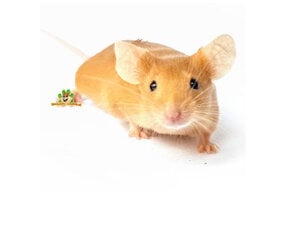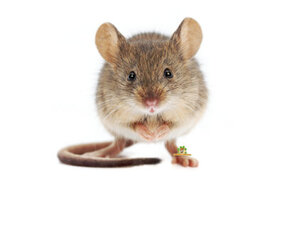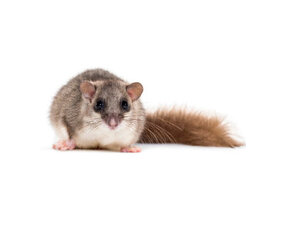Mice Information in the Mice Webshop
The Mouse as a pet
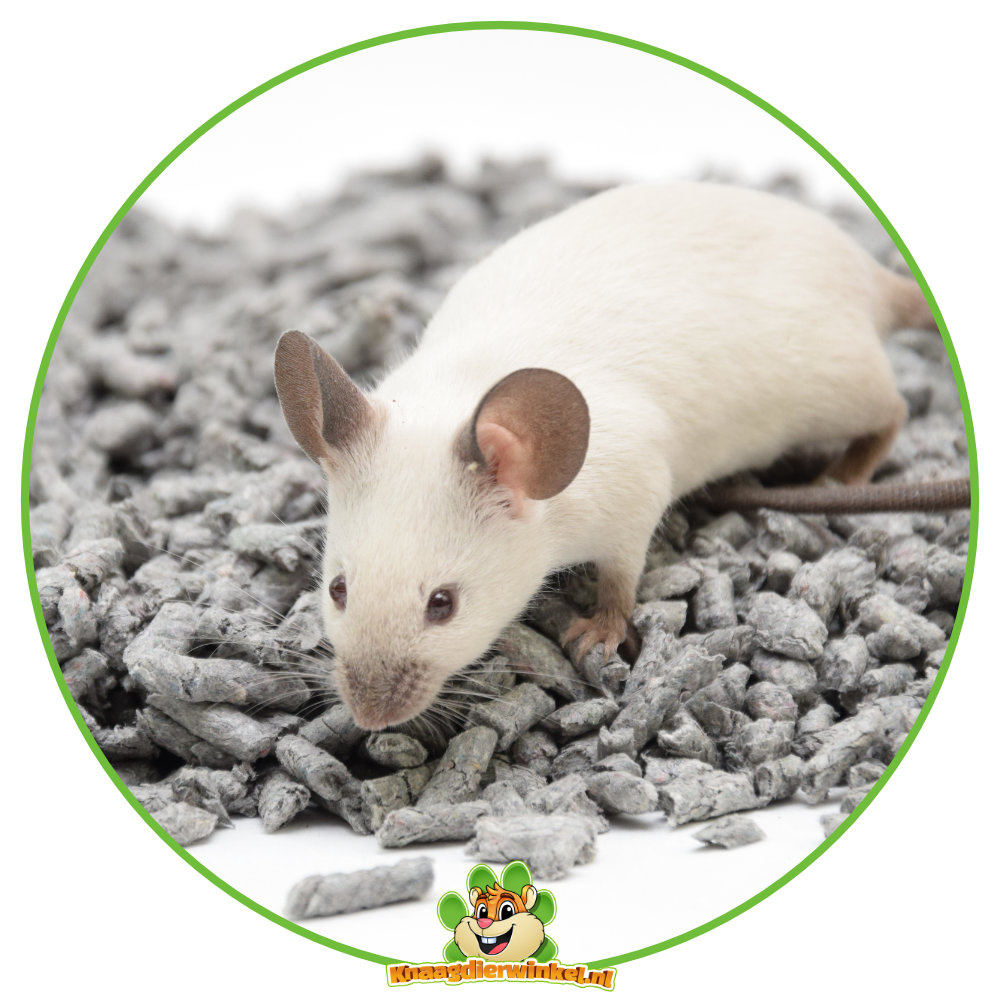 Everything you need to know about keeping mice as pets! Whether you're a beginner or a seasoned rodent lover, this guide will teach you everything you need to know about caring for these adorable and fascinating creatures.
Everything you need to know about keeping mice as pets! Whether you're a beginner or a seasoned rodent lover, this guide will teach you everything you need to know about caring for these adorable and fascinating creatures.
The Mouse: An Introduction
The house mouse, also known as Mus musculus domesticus , belongs to the family Muridae and the order Rodentia. With their head-body length of 6.5 to 9.5 cm and a weight of 20 to 40 g, they are true gems of the rodent world. These little creatures have a life expectancy of 2 to 3 years and are known for their continuously growing incisors.
The Distribution and Natural Habitat of the Mouse
Although the house mouse probably originally came from India, they can now be found almost everywhere in the world. Previously they mainly inhabited steppe areas and semi-deserts, but now they can be found in both fields and buildings, where they feel very much at home.
General Information about Mice
Mice become sexually mature at 28-45 days and can begin breeding at 8-10 weeks. A litter can occur on average 3-6 times per year, with 5-13 litters per time. The gestation period lasts about 19-21 days, and the young ones are nest stayers until they can be weaned at about 4 weeks.
Reproduction and Nutrition of Mice
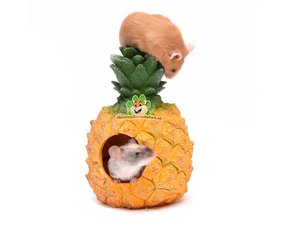 Colored mice have several breeding cycles per year, with a cycle of 4-9 days. Their diet is mainly granivorous, but may also include insects and animal proteins. A balanced diet with the right nutrients is essential for their health and well-being.
Colored mice have several breeding cycles per year, with a cycle of 4-9 days. Their diet is mainly granivorous, but may also include insects and animal proteins. A balanced diet with the right nutrients is essential for their health and well-being.
Housing and Care of Mice
Mice thrive in small groups, but it is important to keep males and females separated to prevent unwanted pregnancies. A spacious cage with different levels, tunnels and toys provides a stimulating environment for these curious animals.
Should you keep mice together or alone? The Social Needs of Mice
Mice are naturally social animals and thrive best in groups. It is advisable to keep mice together, preferably in small groups of the same sex. A group of females can usually live together without any problems. However, it is important to keep unneutered males separated as they often fight for dominance. A castrated male can get along well with a group of females, which ensures a harmonious dynamic within the group.
What is the ideal cage for mice?
A spacious cage, preferably a terrarium, is essential for the well-being of your mice. The minimum dimensions for a cage for 2-4 mice are approximately 80 x 40 x 40 cm (W x D x H). A cage with multiple levels, tunnels, and hiding places provides a stimulating environment in which the mice can express their natural behavior.
Which Ground Cover is Best for Mice?
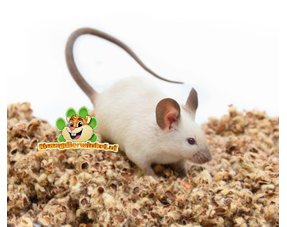
Good bedding is essential for maintaining a clean and healthy living environment for your mice. Choose a ground cover that absorbs well, is odor-binding and low in dust. Suitable options include cotton, paper or hemp fiber. Make sure the layer of ground cover is thick enough so that the mice can dig tunnels and hide.
How should the mouse enclosure be furnished?
A varied cage design offers your mice the opportunity to play, explore and exercise their natural behavior. Place several houses and nesting materials such as hay or cellulose so that the mice have a safe place to rest and sleep. Connect different levels in the cage with stairs or hammocks, and provide toys such as climbing branches, tubes, and chewing wood to stimulate the mice. Ensure that food and water are provided in sturdy bowls or bottles, which should be cleaned and refilled daily.
Handling of mice and healthcare
 It is important to handle mice properly, with gentle hands and without pinching their tails. Watch for signs of illness, such as weight loss, changes in eating and drinking behavior, and a dull coat, and consult a veterinarian if necessary.
It is important to handle mice properly, with gentle hands and without pinching their tails. Watch for signs of illness, such as weight loss, changes in eating and drinking behavior, and a dull coat, and consult a veterinarian if necessary.
Are mice curious animals?
Mice are naturally curious animals. They enjoy exploring their environment and are always looking for new smells, sounds and objects to investigate. This makes them very active and lively pets.
Are mice intelligent?
Never underestimate the intelligence of a mouse! They are surprisingly smart and can often learn simple training methods, such as recognizing their name or navigating a maze. They also enjoy taking on challenges such as finding hidden food or discovering new routes in their cage.
Are mice social?
Mice are social animals that like to live in groups. They communicate with each other through sounds, smells and body language. In a group environment, they often show playful behavior, such as running, jumping and chasing each other. This social aspect makes mice excellent companions for people who enjoy interacting with their pets.
Are Mice Shy?
Although mice can be curious and social, they are also naturally shy animals. They are sensitive to sudden movements and loud noises, which means they need time to get used to new people and environments. However, with patience and careful handling, mice can become tame and affectionate.
Are mice agile?
Mice are master climbers and acrobats. They are very agile and can easily maneuver through narrow openings and balance themselves at great heights. In a well-appointed cage, you will often see mice using stairs, tunnels and other climbing options to demonstrate their agility.
In short, mice have a surprisingly diverse character and can bring a lot of joy and pleasure to their owners. With the right care, attention and interaction, mice can grow into beloved pets that will hold a special place in your heart.
How can you tame mice?
Taming mice requires patience, consistency and gentle handling. Here are some steps you can follow to tame mice:
Create a quiet environment: Place the mouse enclosure in a quiet place in the house, away from loud noises and sudden movements. This helps the mice feel safe and comfortable.
Let them get used to your presence: Sit quietly near the mouse cage and talk softly to the mice so that they can get used to your voice and smell. Do this regularly, but don't force interaction if the mice are feeling anxious.
Hand feeding: Start by offering food from the palm of your hand, such as pieces of vegetables or fruit. Let the mice come to you at their own pace to get the food. This helps build positive associations between you and food.
Touch: Once the mice are comfortable taking food from your hand, you can try gently placing your hand inside the cage and letting them sniff. Avoid sudden movements and let the mice get used to the touch of your hand.
Handling: Once the mice have become accustomed to your hand and no longer seem afraid, you can try gently picking them up. Place one hand under the body of the mouse and support the tail with your other hand. Lift the mouse slowly and let it get used to the sensation of being held.
Regular Interaction: Continue to spend time with your mice regularly by talking to them, feeding them and handling them gently. The more time you spend with them, the more familiar they will become with your presence.
Be patient: Taming mice can take a long time and requires patience. Do not force interaction if the mice are anxious and respect their boundaries. With consistency and gentle handling, the mice will eventually become tame and affectionate.
How do you recognize health problems in your mouse?
Recognizing health problems in mice requires observation and attention to their behavior, appearance and eating habits. Here are some common health problems in mice and how to recognize them:
Weight loss: Note if the mouse suddenly loses weight. Significant weight loss can indicate several health problems, including parasitic infections, dental problems or internal diseases.
Decreased appetite: If a mouse eats significantly less than normal, this could be a sign of illness. Watch for changes in eating habits and make sure there is enough food available.
Changes in activity: Watch for changes in the mouse's activity level. If a normally active mouse suddenly becomes lethargic or lethargic, it may indicate health problems such as infections or pain.
Abnormal breathing: Note if the mouse makes abnormal breathing sounds, such as wheezing, wheezing, or gasping. This may indicate respiratory infections or other breathing problems.
Changes in stool: Watch for changes in the color, consistency, or frequency of the mouse's feces. Abnormal stools may indicate digestive problems or infections.
Skin and coat problems: Check the mouse's skin and coat regularly for signs of irritation, bald spots, redness, crusting or parasites such as fleas or mites.
Eye and nose discharge: Watch for any abnormal discharge from the mouse's eyes or nose, which may indicate infections or other health problems.
Behavioral changes: Watch for changes in the mouse's behavior, such as aggression, apathy, excessive scratching, or unusual behavior such as circling or uncontrolled movements.
If you notice one or more of these symptoms in your mouse, it is advisable to contact a veterinarian who specializes in small pets. Early diagnosis and treatment can often help to effectively address health problems in mice.



